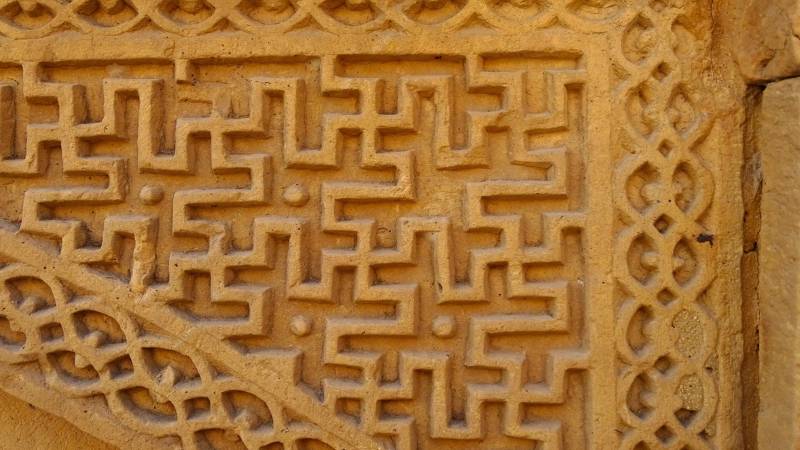
The swastika motif is widely used in funerary monuments in Sindh. Its main purpose was simply ornamentation. I have seen depictions of swastikas in rock art and several tombs in Sindh. The earliest evidence of swastika use is found in Mohenjo Daro in Sindh. This symbol continued to appear in Sindh's old Hindu, Buddhist, and Jain structures. However, what truly stands out is the adoption of this symbol by Muslim artisans, who used it as a decorative motif in many tombs that are scattered throughout Sindh, thereby creating a unique cultural fusion in the region's architecture.
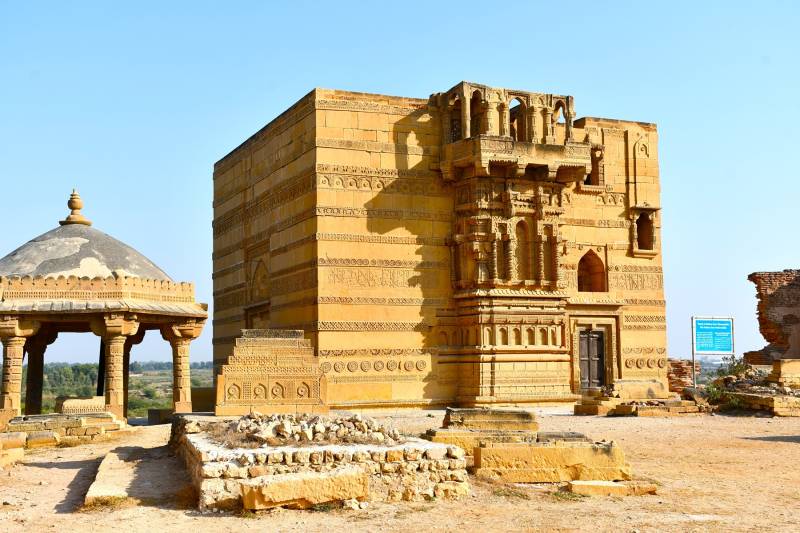
The earliest representations of the swastika symbol are found in the funerary monuments at Makli in Thatta and Chaukhandi tombs at various places in Sindh. The swastika symbol first appeared on the mihrab niche in the tomb of Jam Nizamuddin II alias Jam Nindo (d 1509) at Makli Hill. Jam Nindo was the ruler of Sindh (r 1461-1508) during the Samma dynasty.
The earliest evidence can be seen in the tomb of Mian Nasir Muhammad Kalhoro and other stone-carved graves in his graveyard in Dadu’s Khairpur Nathan Shah
Apart from the tomb of Jam Nindo, the tomb enclosure of Jan Baba also depicts swastika motif. Jan Baba (d 1570) was the father of Isa Khan Tarkhan II, who was the Mughal governor of Thatta. On either side of the spandrels of the western recessed arch of Jan Baba’s wall enclosure are depicted swastikas. On the left of this recessed arch are geometric designs, including a swastika. The swastika is engraved with a configuration of floral and geometric designs.
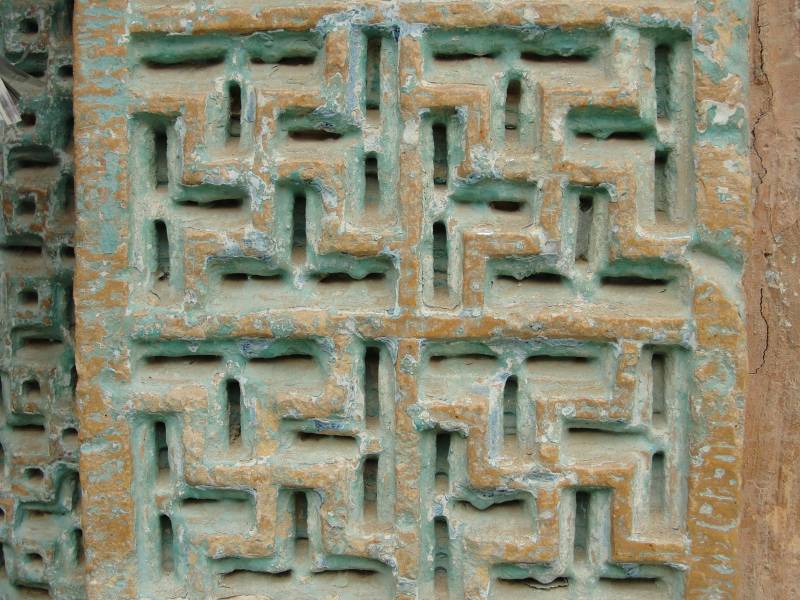
The doorway of the tomb of Mirza Jani Begi and Ghazi Beg also represents a series of swastikas. The door frame of the doorway that leads to the main burial chamber depicts a frieze of swastikas. One of the stone-carved graves inside the brick enclosure of Mirza Baqi Beg Uzbek also represents a swastika motif.
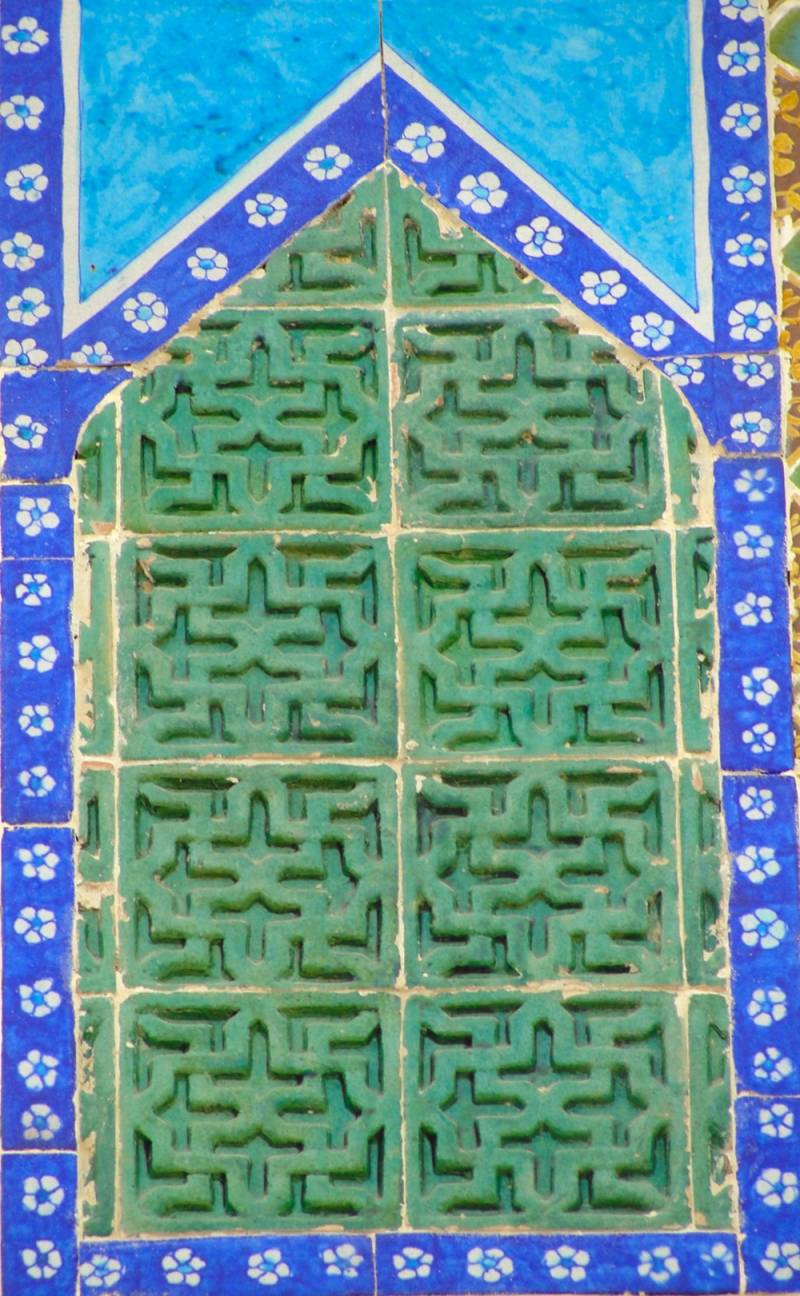
The shafts of an unidentified canopy near Badi-uz-Zaman's tomb at Makli are also decorated with swastika designs. The whole shaft depicts the interlacing swastika patterns. One of the graves also shows a swastika symbol inside this enclosure.
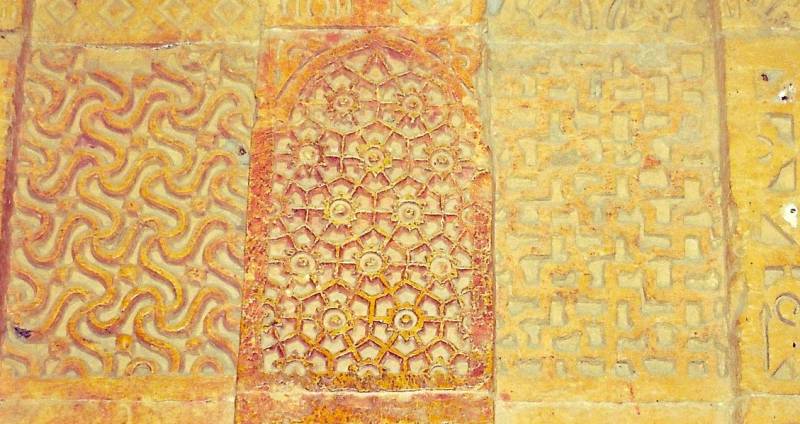
Apart from the Samma, Arghun, Tarkhan, and Mughal buildings at Makli Hill, several Mughal monuments in Rohri and Sukkur depict the Swastika symbol, showcasing the continuity of this motif across different dynasties. In the family graveyard of Mir Abul Qasim Namkeen, popularly known as Sateen-Jo- Aastan, there are a few stone-carved graves with the swastika symbol. The swastika motif is found on both gravestones and platforms, further emphasizing its enduring presence in Sindh's cultural history. On the top section of the headstones of graves, swastikas are depicted in configuration with rosettes.
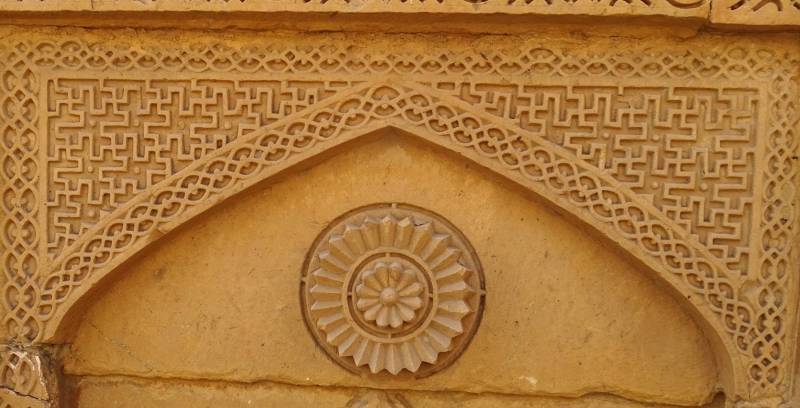
The swastika symbol is also engraved on the base of the pillars of Mir Muhammad Masoom Shah Bakhri’s stone canopy in Sukkur. These four balanced lines of the swastika attracted artists and craftsmen of Sammas, Arghuns, Tarkhans, Mughals, Kalhoras and Talpurs, underscoring the interconnectedness of Sindh's cultural history.
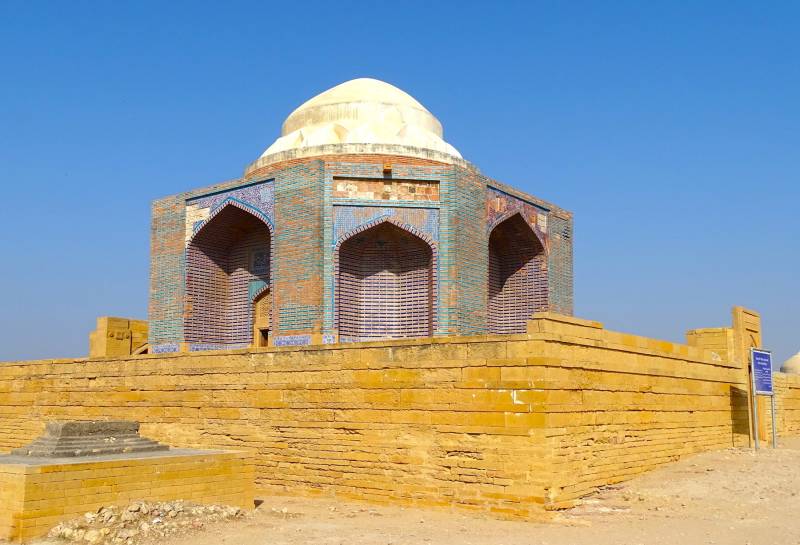
The swastika motif also appears in Kalhora funerary monuments. The earliest evidence can be seen in the tomb of Mian Nasir Muhammad Kalhoro and other stone-carved graves in his graveyard in Dadu’s Khairpur Nathan Shah. There is a double-stone railing around the canopy of Mian Nasir Muhammad Kalhoro, which is erected on a raised platform. The stone railings are constructed of buff sandstones with perforated panels. The delicate geometric and floral screens are the hallmarks of the stone railings of Mian Nasir Muhammad Kalhoro. The stone railings are supported by pillars at regular intervals. The Swastika motif is found on the stone railing. Stone railings are a distinctive feature of Kalhora funerary monuments.
The stone-carved grave of Mian Shafi Muhammad inside the tomb of Mian Yar Muhammad Kalhoro in Dadu’s Khudabad is another example of the Kalhora period (1700-1783). This stone railing is also supported by regular intervals. The perforated stone screen of geometric tracery surrounds the grave of Mian Shafi Muhammad Kalhoro. The grave of Mian Shafi Muhammad Kalhoro is erected over a raised platform. According to an inscription, this stone-carved grave was built in 1744 AD, one year after his death in 1743.
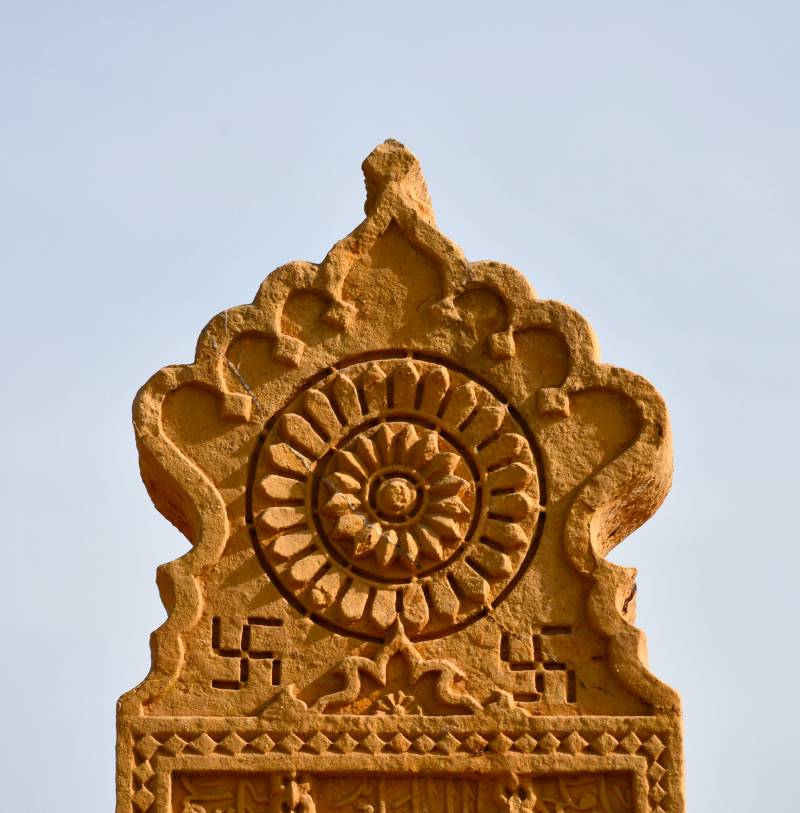
The most impressive stone railing is around the tomb of Mian Ghulam Shah Kalhoro in Hyderabad. This is constructed of buff sandstone with regular intervals on the edge of a platform and runs around the platform. The graves of Hakim Mirza Allah Bakhsh Qandahari and Mirza Qamar-ud-Din Lahori, both inside the tomb-fortress of Mian Ghulam Shah, have also been provided with stone railings.
The stone canopy of Mir Shahdad Faqir Talpur and Mir Chakar Khan Talpur are also surrounded by double stone railings. Both the lower parapet and upper parapet walls bear delicate geometric tracery. But most of the perforated panels are now broken. The double stone railing was commonly used in the Kalhora period tombs, first appearing in the tomb of Mian Nasir Muhammad Kalhoro. Another tomb of the Kalhora period, which belongs to Mondar Pallari and is located in Tak Makan necropolis in the Thano Bula Khan taluka in the Jamshoro district, is erected over a double platform carrying the double stone railings.
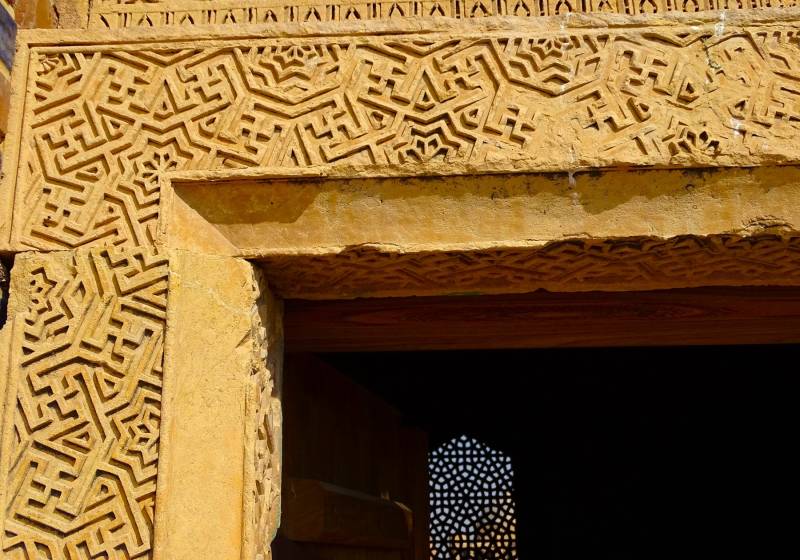
Three other stone-carved graves in the necropolis of Mian Nasir Muhammad Kalhoro belonged to his mother and his two wives, Bibi Jado and Bibi Baiti. The distinctive features of these stone-carved graves are calligraphy and ornamentation. There is a stone railing around the stone-carved grave of Mian Nasir Muhammad Kalhoro's mother. The grave is erected over a raised stone platform with decorative slabs depicting floral and geometric designs. On the edge of the platform, stone railing is constructed, supported by posts at regular intervals. The northern side has an opening with a flight of three steps to ascend the grave platform. The stone-carved graves of Mian Nasir Muhammad Kalhoro’s wives, Bibi Jado and Bibi Baiti, are noted for calligraphy and floral and geometric designs. The interlacing swastika patterns decorate the graves of Mian Nasir Muhammad Kalhoro’s mother and his two wives, Bibi Jado and Bibi Baiti. The slabs on the southern side of the grave of Bibi Baiti depict a swastika. Both graves are erected over a common platform.
The tombs of several Kalhora nobles and ministers also depict swastikas. The swastika is also displayed on the capital of Mir Shahdad Khan Talpur's canopy in Sanghar’s Qubo Shahdad graveyard. Five domed pavilions or canopies of Palijas at Pir Lakho graveyard in Thatta district also depict swastikas. They are mostly found on the shafts of the pillars of the canopies.
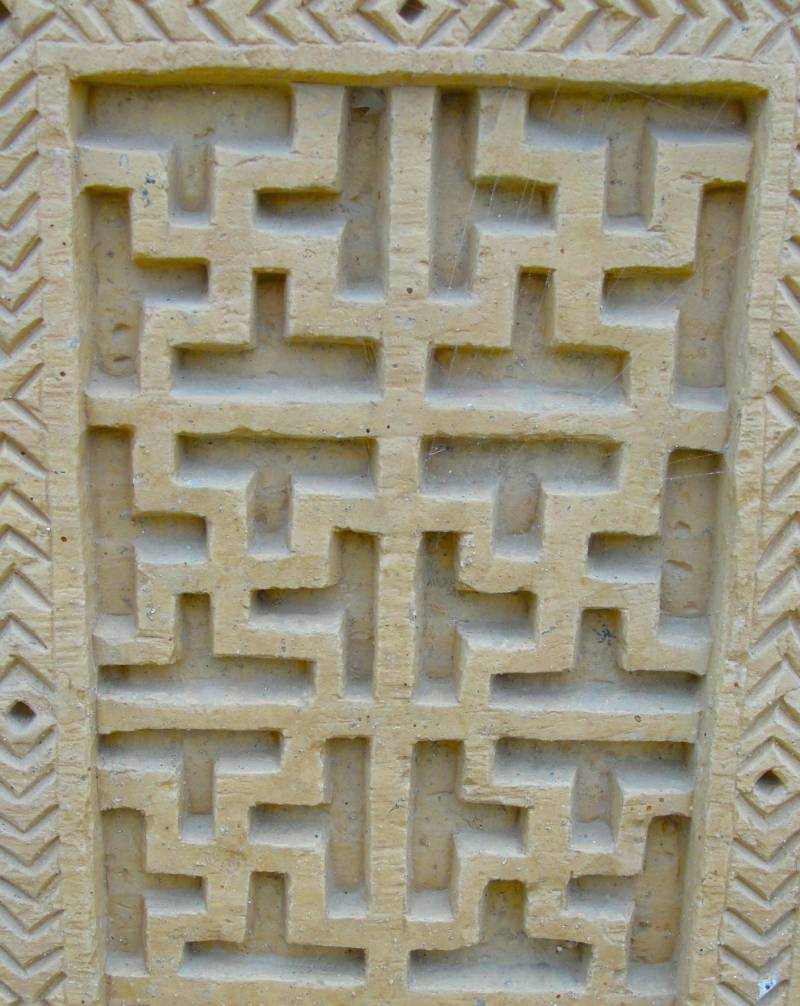
Apart from the stone buildings, brick buildings also carry this intriguing symbol. The façade of Shah Khairuddin’s tomb in Sukkur City is decorated with four glazed tiles bearing a swastika; this tomb was also built during the Kalhora period (1700-1783).

